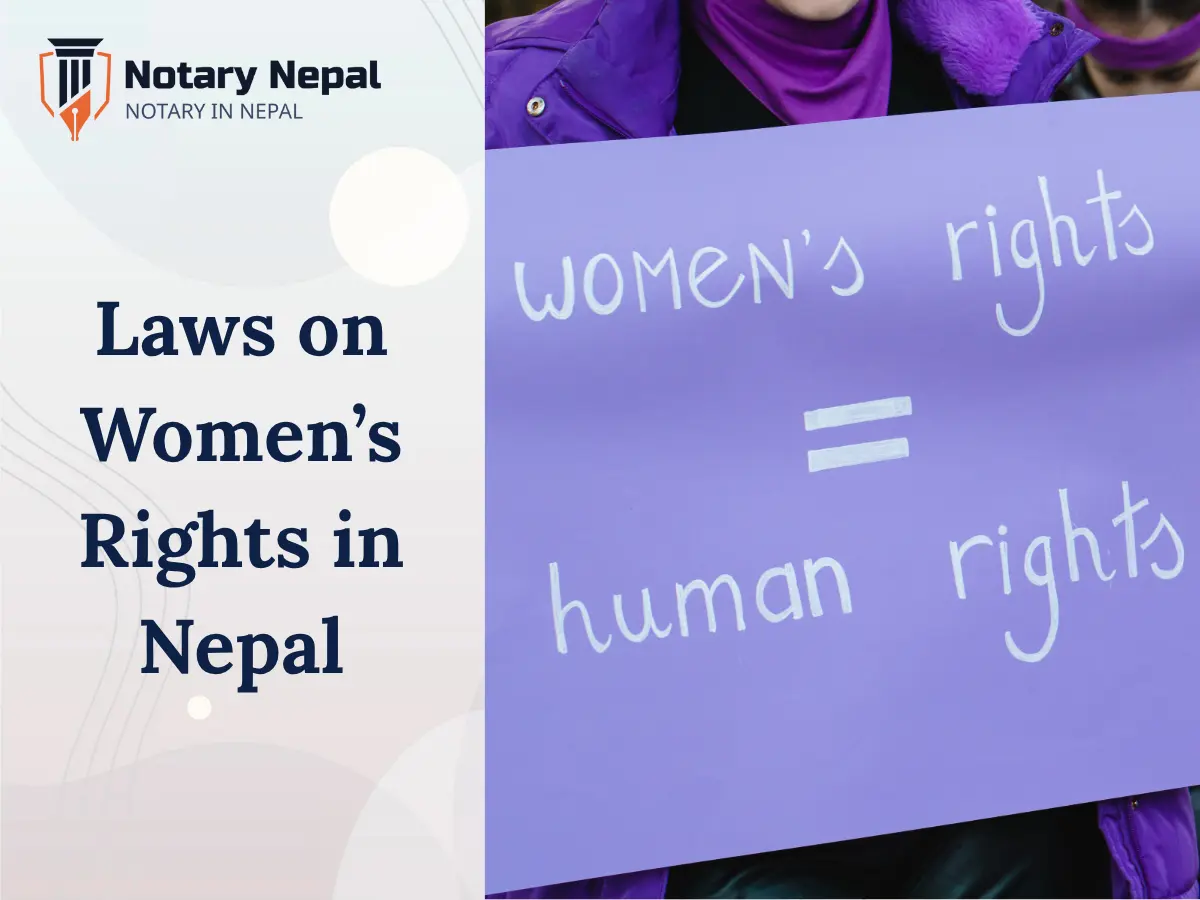

Table of Contents
Introduction
Nepal's legal journey toward gender equality is a remarkable story of progress. In a country where nearly half of the population is female, legal reforms over the past few decades have aimed to protect women's rights, promote equal opportunities, and eliminate discrimination. While Nepal has made notable legal advancements, challenges still persist in implementation and enforcement.
This article provides an in-depth look at Nepal's key laws on women's rights, analyzing how they impact women’s daily lives, social status, and legal protection. We also discuss gaps between legal provisions and ground realities and explore ways to strengthen women's rights in Nepal.
The Constitution of Nepal (2015): A Strong Foundation
One of the most impactful milestones in Nepal’s legal framework for gender equality is the Constitution of Nepal (2015). This progressive constitution not only recognizes gender equality but also embeds it into the core of Nepal’s legal and political structure.
Key Constitutional Provisions for Women's Rights
- Right to Equality (Article 18) – Guarantees that no one shall be discriminated against on the grounds of gender and ensures equal treatment under the law.
- Right to Proportional Representation (Article 38) – Mandates at least 33% representation of women in all governmental bodies, ensuring women’s participation in political decision-making.
- Right to Social Justice (Article 42) – Prioritizes affirmative action for marginalized groups, including women, to ensure economic, social, and political inclusion.
- Right to Property (Article 25) – Grants women equal inheritance rights, ensuring they can own, inherit, and sell property independently.
- Right to Reproductive Health (Article 38) – Recognizes reproductive health as a fundamental right, allowing women to make independent choices about their health and bodies.
These constitutional provisions provide the foundation for Nepal’s commitment to gender equality. However, laws and policies are needed to enforce these rights in practice.
Key Laws Strengthening Women's Rights in Nepal
While the Constitution provides broad protections, various laws address specific issues that impact women’s rights in Nepal. Below are the most significant laws designed to protect and empower women.
1. The Civil Code (2017): Strengthening Family and Property Rights
The Civil Code 2017 is one of Nepal’s most progressive legal reforms, granting women equal rights in marriage, divorce, and property ownership.
Key Provisions
- Equal inheritance rights – Women can inherit property from birth, eliminating past practices where only sons could inherit ancestral property.
- Legal protection against child marriage – The minimum legal age for marriage is 20 years for both men and women, reducing early and forced marriages.
- Right to divorce – Women now have equal rights to file for divorce, ensuring they are not trapped in abusive or unhappy marriages.
Although these reforms are powerful, many rural women remain unaware of their rights, and traditional customs still pose challenges to full implementation.
2. The Criminal Code (2017): Legal Protections Against Gender-Based Violence
The Criminal Code 2017 addresses crimes against women, including rape, sexual harassment, domestic violence, and human trafficking.
Key Provisions
- Criminalization of rape and sexual assault – Clearly defines rape, marital rape, and sexual violence, with strict penalties for offenders.
- Stronger punishment for domestic violence – Recognizes physical, mental, emotional, and economic abuse as punishable offenses.
- Protection against human trafficking – Nepal has strict anti-trafficking laws, with heavy penalties for traffickers and offenders.
Despite these legal protections, gender-based violence remains widespread in Nepal. Many cases go unreported due to fear, social stigma, and weak enforcement mechanisms.
3. The Gender Equality Act (2006): Eliminating Discriminatory Laws
The Gender Equality Act 2006 was a landmark reform that revised and eliminated gender-discriminatory provisions in Nepalese laws.
Key Provisions
- Overruled discriminatory laws – Any legal provision contradicting gender equality is automatically invalid.
- Affirmative action for women – Promotes women’s representation in government, business, and leadership roles.
- Equal legal treatment – Women now have equal rights in employment, property, and criminal cases.
This Act was a major turning point in aligning Nepalese laws with international gender equality standards.
4. The Domestic Violence (Offense and Punishment) Act (2009): Protecting Women at Home
Domestic violence remains one of the most pressing issues for women in Nepal. The Domestic Violence Act (2009) was introduced to provide legal remedies for survivors.
Key Provisions
- Recognizes physical, emotional, sexual, and financial abuse as punishable offenses.
- Provides legal protection orders to survivors, preventing their abusers from approaching them.
- Allows immediate compensation and rehabilitation for victims.
Although this law is progressive, social stigma and lack of awareness prevent many women from reporting abuse.
5. The Sexual Harassment at Workplace Prevention Act (2015): Safe Workplaces for Women
The Sexual Harassment at Workplace Prevention Act 2015 protects women from unwanted advances, verbal abuse, and inappropriate behavior at work.
Key Provisions
- Clearly defines workplace harassment – Includes verbal, physical, written, and non-verbal harassment.
- Mandatory anti-harassment policies in companies – Employers must implement a complaint system for victims.
- Legal consequences for offenders – Offenders can face fines, job termination, or imprisonment.
Despite this, many Nepali women fear retaliation for reporting workplace harassment. Stronger awareness campaigns and enforcement are needed.
6. The Safe Motherhood and Reproductive Health Rights Act (2018): Women's Right to Healthcare
This 2018 law guarantees women full control over reproductive health decisions.
Key Provisions
- Ensures access to safe childbirth, contraception, and abortion services.
- Prevents forced sterilization and birth control practices.
- Guarantees government-funded maternity healthcare services.
This Act is a major step forward in ensuring maternal health and reproductive rights in Nepal.
Bridging the Gap: Laws vs. Reality
Although Nepal has strong legal frameworks for women's rights, implementation remains a challenge.
- Lack of Awareness: Many women don’t know their legal rights, especially in rural areas.
- Weak Enforcement: Authorities fail to enforce laws, leading to ongoing discrimination and violence.
- Social and Cultural Barriers: Deep-rooted patriarchal traditions still hinder legal progress.
Solutions for Stronger Implementation
- Legal literacy programs to educate women about their rights.
- Stronger enforcement of gender laws by government agencies.
- Community involvement to challenge discriminatory cultural practices.
Conclusion: The Road Ahead
Nepal has made significant progress in protecting women's rights, but more work is needed. Strengthening legal enforcement, increasing awareness, and challenging cultural biases will be essential in making gender equality a reality, not just a legal promise.
Every lawyer, policymaker, activist, and citizen has a role to play in ensuring women in Nepal can fully exercise their rights. By working together, Nepal can continue to be a regional leader in gender equality and justice.
For legal assistance or women’s rights support, visit Notary Nepal.
This article is for informational purposes only and does not constitute legal advice, advertisement, or solicitation. Notary Nepal and its team are not liable for any consequences arising from reliance on this information. For legal advice, please contact us directly.


